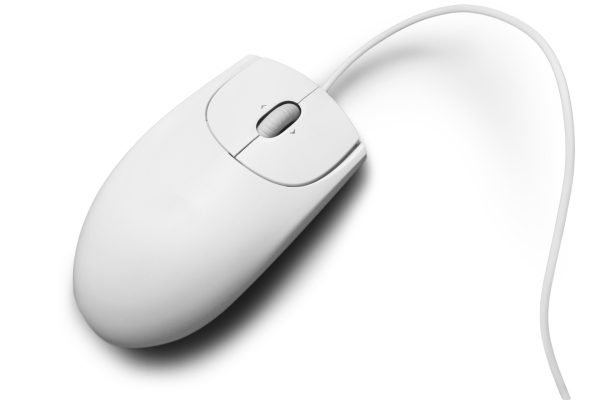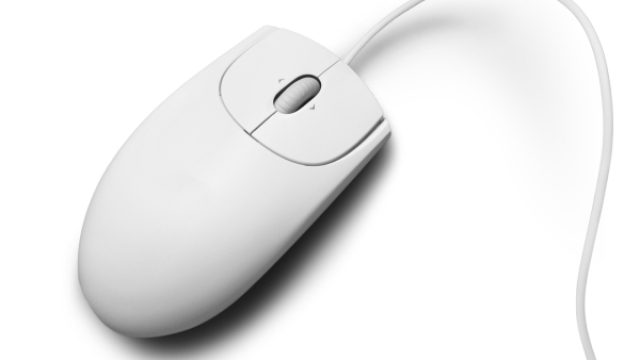Is your mouse going in the opposite direction and leading you on a wild chase? Don’t fret!
In this article, we’ll reveal the secrets to fix this peculiar problem.
From tweaking settings to giving your mouse a spa day, we’ve got you covered.
So hang on tight and get ready to take control of your mouse’s rebellious adventures! Short answer: Check settings, clean mouse.
But wait, there’s more…
How To Fix Mouse Going Opposite Direction
If you’ve ever experienced the frustrating issue of your mouse going in the opposite direction, fear not!
In this article, we will explore some simple yet effective solutions to get your mouse back on track.
So let’s dive right in and troubleshoot this problem together.
Checking the Mouse Settings

Before we delve into more advanced troubleshooting methods, let’s start with the basics.
Checking your mouse settings can often reveal the culprit behind the opposite direction conundrum. Here’s how you can do it:
For Windows Users
- Go to the Control Panel: Navigate to the Control Panel on your Windows computer. You can usually find it by clicking on the Start button and typing “Control Panel” in the search bar.
- Select “Mouse” or “Mouse and Touchpad”: Once you’re in the Control Panel, look for the “Mouse” or “Mouse and Touchpad” option and click on it.
- Check the “Pointer Options” tab: In the Mouse settings window, locate the “Pointer Options” tab and click on it. This tab contains various settings related to your mouse’s behavior.
- Ensure “Enhance pointer precision” is unchecked: Among the options listed in the “Pointer Options” tab, make sure that the “Enhance pointer precision” option is not checked. Sometimes, having this option enabled can cause unexpected mouse movements.
By following these steps, you can ensure that your mouse settings are not causing it to go in the opposite direction.
Cleaning the Mouse

If checking the settings didn’t solve the issue, it’s time to give your mouse some tender loving care.
Dust and debris can accumulate over time, affecting the mouse’s movement and causing it to behave erratically.
Here’s how you can clean your mouse:
A. Turn off the computer and unplug the mouse: Before you start cleaning, shut down your computer and unplug the mouse from the USB port. This ensures your safety and prevents any accidental actions.
B. Use a soft cloth or cotton swab to clean the mouse surface and buttons: Gently wipe the surface of the mouse using a soft cloth or a cotton swab. Pay attention to the areas where dust or grime might have accumulated. Cleaning the buttons is equally important, as they can gather dirt over time.
C. Remove any debris or dust that may be affecting the mouse’s movement: Inspect the bottom of the mouse for any visible debris or dust particles. If you spot any, carefully remove them using a cotton swab or a soft brush. Ensure that there are no obstructions hindering the mouse’s sensor.
D. Reconnect the mouse and test if the issue is resolved: Once you’ve cleaned the mouse, plug it back into the USB port and power on your computer. Test the mouse movement to see if it’s back to normal. With any luck, your mouse will be functioning as expected.
By giving your mouse a thorough cleaning, you eliminate potential sources of interference that may have been causing it to go in the opposite direction.
Remember, these troubleshooting steps are meant to address common causes of the issue. If you’ve tried everything mentioned above and the problem persists, it might be worth considering updating your mouse drivers or seeking professional assistance. But in most cases, these simple fixes should get your mouse back on track.
Related article: How Long Can a Laptop Stay in a Hot Car?
FAQs About How To Fix Mouse Going Opposite Direction
Why is my mouse moving the opposite way?
If your mouse is moving in the opposite direction than you intend, it could be due to a couple of reasons.
First, check your mouse settings to ensure that the pointer precision option is not enabled. Additionally, make sure that there is no dirt or debris affecting the mouse’s movement.
Cleaning the mouse and ensuring a clear surface can help resolve this issue.
Why is my mouse moving to the right?
If your mouse is consistently moving to the right, there might be an issue with the mouse’s hardware or software settings.
Firstly, try cleaning the mouse to eliminate any dirt or debris that could be interfering with its movement.
If the issue persists, check your mouse settings to ensure that no settings are causing the mouse to move in a specific direction.
Consider updating your mouse drivers or seeking professional assistance if the problem continues.
Why is my cursor backwards in Word?
If you notice that the cursor in Microsoft Word is moving backward, it might be due to a setting called “Right-to-left editing
.” This setting is typically used for languages that are written from right to left. To fix this, go to the “File” menu in Word, select “Options,” and navigate to the “Advanced” tab. Under the “Editing options” section, uncheck the box next to “Enable right-to-left editing.”
How do I change the direction of my mouse in Windows 10?
To change the direction of your mouse in Windows 10, follow these steps:
- Go to the “Start” menu and click on the “Settings” icon (shaped like a gear).
- In the Settings window, select “Devices.”
- From the left sidebar, choose “Mouse.”
- Under the “Mouse” settings, you will find options to adjust the mouse’s sensitivity, scrolling behavior, and more. Make the desired changes to customize the mouse’s direction according to your preference.
Related article: How To Change Mouse Direction In Dual Monitors?
How do I change my mouse settings?
To change your mouse settings in Windows, follow these steps:
- Go to the “Start” menu and click on the “Settings” icon.
- In the Settings window, select “Devices.”
- From the left sidebar, choose “Mouse.”
- In the Mouse settings, you can customize various aspects such as the pointer speed, button configuration, scroll behavior, and more. Adjust these settings according to your preferences.
How do I invert my mouse on Windows 11?
To invert your mouse on Windows 11, you can follow these steps:
- Go to the “Start” menu and click on the “Settings” icon.
- In the Settings window, select “Devices.”
- From the left sidebar, choose “Mouse.”
- Scroll down in the Mouse settings until you find the “Additional mouse options” link. Click on it.
- In the Mouse Properties window that appears, go to the “Pointer Options” tab.
- Look for the checkbox that says “Enable pointer shadow” and uncheck it.
- Click on “Apply” and then “OK” to save the changes.
How do I reverse my mouse on Windows?
To reverse the direction of your mouse on Windows, you can follow these steps:
- Go to the “Start” menu and click on the “Settings” icon.
- In the Settings window, select “Devices.”
- From the left sidebar, choose “Mouse.”
- In the Mouse settings, you may find an option called “Switch primary and secondary buttons.” Enable this option to reverse the functionality of the left and right mouse buttons.
How do I reverse mouse zoom?
The process to reverse mouse zoom can vary depending on the application or program you are using. Generally, you can check the settings of the application or program to see if there is an option to invert or reverse the mouse zoom direction.
Look for settings related to mouse or trackpad preferences, scrolling behavior, or accessibility options.
If you’re unable to find such settings, you can search for specific instructions for the application or program you are using.
How do I invert my computer mode?
To invert your computer mode, you need to access the accessibility settings of your operating system.
The steps may vary depending on whether you are using Windows, macOS, or another operating system.
In general, you can go to the system settings or control panel and look for the accessibility or display options.
Within those settings, there may be an option to invert colors, which can achieve the desired inverted mode.
How do I fix my inverted mouse in Windows 7?
If your mouse is inverted or behaving erratically in Windows 7, you can try the following steps to fix it:
- Go to the “Start” menu and click on “Control Panel.”
- In the Control Panel, select “Hardware and Sound.”
- Under the “Devices and Printers” section, click on “Mouse.”
- In the Mouse Properties window, go to the “Pointer Options” tab.
- Uncheck the box next to “Enhance pointer precision.”
- Click on “Apply” and then “OK” to save the changes.
What is reverse zoom?
Reverse zoom refers to the ability to change the direction of the zoom function on a mouse or trackpad.
By default, scrolling up on a mouse or trackpad zooms in, while scrolling down zooms out. However, with reverse zoom, the scrolling direction is inverted, so scrolling up zooms out, and scrolling down zooms in.
This feature can be helpful for users who prefer a different scrolling behavior or have specific accessibility needs.
How do you invert the mouse wheel in Inventor?
To invert the mouse wheel direction in Inventor, you can follow these steps:
- Open Autodesk Inventor and go to the “Tools” menu.
- From the dropdown menu, select “Application Options.”
- In the Application Options dialog box, click on the “Display” tab.
- Under the “Display” tab, you will find the “Mouse Wheel Direction” section.
- By default, the option “Zoom with wheel forward” is selected. To invert the mouse wheel direction, choose the “Zoom with wheel backward” option.
- Click on “OK” to apply the changes.
By following these steps, you can change the mouse wheel direction in Autodesk Inventor according to your preference.
Final Thoughts About How To Fix Mouse Going Opposite Direction
In conclusion, dealing with a mouse that moves in the opposite direction can be a frustrating experience.
However, by following the troubleshooting steps mentioned in this article, you can often resolve the issue quickly and effectively.
Starting with checking the mouse settings and ensuring that the “Enhance pointer precision” option is disabled can make a significant difference.
Additionally, giving your mouse a thorough cleaning to remove any dirt or debris can improve its movement.
If these steps don’t solve the problem, it might be worth considering updating your mouse drivers or seeking professional assistance.
Remember, each situation may be unique, and what works for one person may not work for another.
Don’t hesitate to try different solutions and explore additional resources if needed.
With patience and persistence, you can successfully fix your mouse and enjoy smooth and accurate movements once again.


